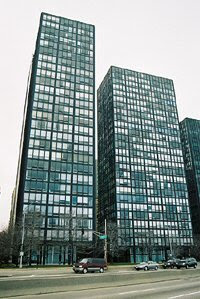

The landscape painters in Flanders painted in more of a neo-classicism style. They used symbolic elements in their paintings to dramaticize their art. "The Abduction of Europa" by Rembrandt is an example of symbolism used in painting

"Art washes away from the soul the dust of everyday life" - Pablo Picasso











_06.jpg)


3. Please describe the architecture of the Pompidou Centre.
The Pompidou centre is classified as post-modern or high-tech architecture. It is a steel structure reinforced with concrete floors.




David is known for his propaganda paintings of the French Revolution. In the portrait of Napoleon that I chose to compare to Delacroix's self portrait, he shows the militant leader as fearless and all- powerful. He glorifies war and portrays Napoleon's conquest as being glamorous. However, one cannot deny the impressive skill that David exhibits in his portraits. They are so life-like, they almost look as though they are a picture. He also uses light expertly, often using it as a device to convey a meaning. Such as in "The Death of Marat". He shines a beam of light over the letter that Marat holds in his lifeless hand, symbolizing hope.
Delacroix was a romantic who represented the beginnings of the impressionist style. He was less of a political propagandist painter than David was, painting historical scenes of the past (instead of paintings of current political leaders and events during the time of the French Revolution). However (and I know it is not a portrait but it expresses my point better), his painting, "Liberty Leading the People", captures a different side of the French Revolution than any of David's works. He captured the spirit of the people, the ones who fueled the revolution. He gave the people of France the credit for the success of it, instead some power- hungry man on a horse or a stuffy nobleman. Which goes back the word "romantic" that he has been labeled. He paints with passionate brushstrokes, but his finished product is far from the flawless works of David. Maybe there's something to that. David's portrait of Napoleon is far from realistic because it would be impossible to look so relaxed and in control while the horse that you are on is rearing up. The portrait portrays Napoleon to his people and the world as a godlike man who could control the world. He glorified the man who would come to name himself Emperor of France, completely contradicting everything that the revolution was about. He saw the upheaval in the French government as his chance to become absolute ruler of France instead of the French public's opportunity to have a say in the government that presides over them. Delacroix painted the spirit of the people during the revolution; the spirit of liberty. His brushstrokes are looser. He also uses light as an instrument to highlight something in the painting. In this case it's lady liberty bearing the French flag. They represent the ideals of liberty: truth and freedom. David's brushstrokes are clean. They represent past ways of thinking in that the portrait shows one man in control of not only people, but animals and nature. David's portrait of Napoleon is a piece of propaganda while Delacroix's painting of Lady Liberty and the people of France is a painting of the true spirit of passion and desire of justice that the people of France displayed during their revolt against the monarchical government that ruled them.
2. Compare Ingres vs. Delacroix's use of line
Ingres' line is virtually perfect. He was a student and follower of David and aspired to be a historical painter. His career was during Napoleon's conquests of Europe, which gave him the opportunity to study and borrow techniques
of the old masters so that he could perfect them. Delacroix's line was nowhere near the photograph-like quality of Ingres. Delacroix was sowing the seeds of the impressionist movement in painting with his style. Ingres painted with such a precision and relentless attention to detail. Delacroix was not interested in simply portraying
a highly realistic picture of someone posing, he was interested in expressing a certain emotion or idea with his passionate brushstrokes. He represented the future, while Ingres represented the past.
3. Research 'French Academy Painting', esp the work of Jerome and explain 1) how it continues French Neoclassical tradition and 2) How the Impressionists rebelled against it.
French Academy Painting is in the tradition of neo-classical painting. The work of David, Ingres, and Jerome can be classified as "French Academy Painting". It was focused on perfecting the techniques and style of the past. Romantics like Delacroix began the movement known as impressionism. His followers would be artists such as Monet, Manet, and Degas. They disregarded rules of line, form, and technique. They represented the future, while neo-classicism represented the past.